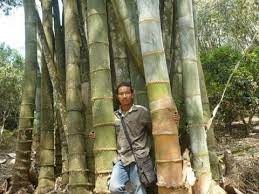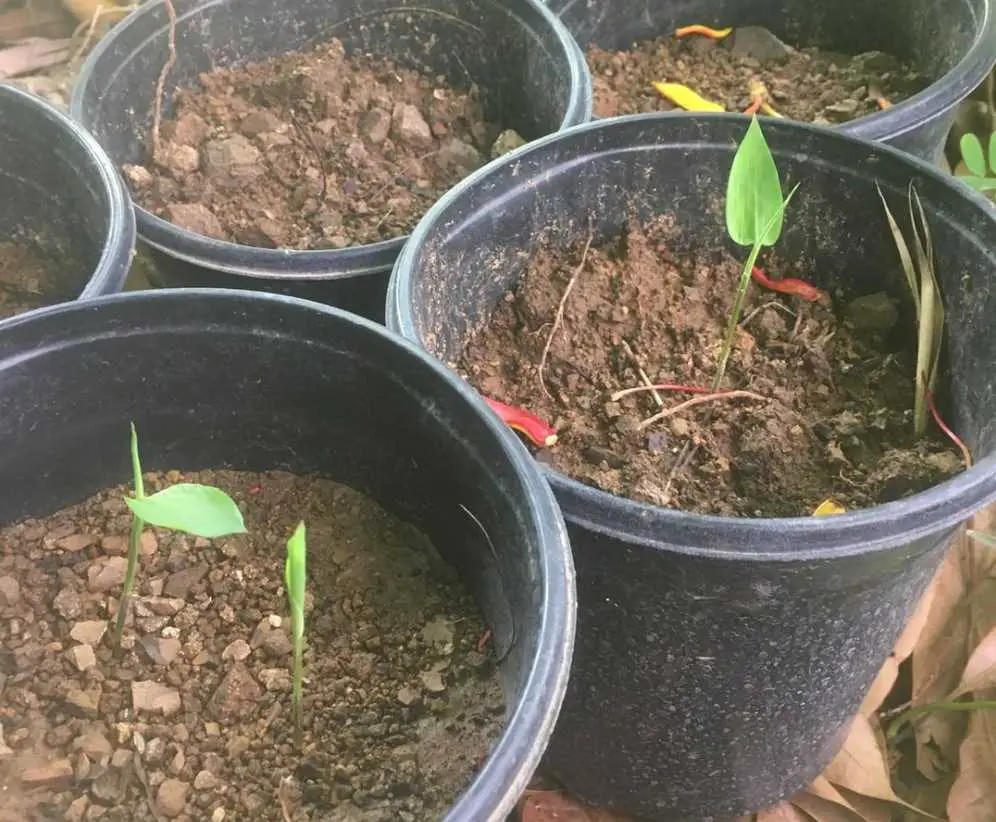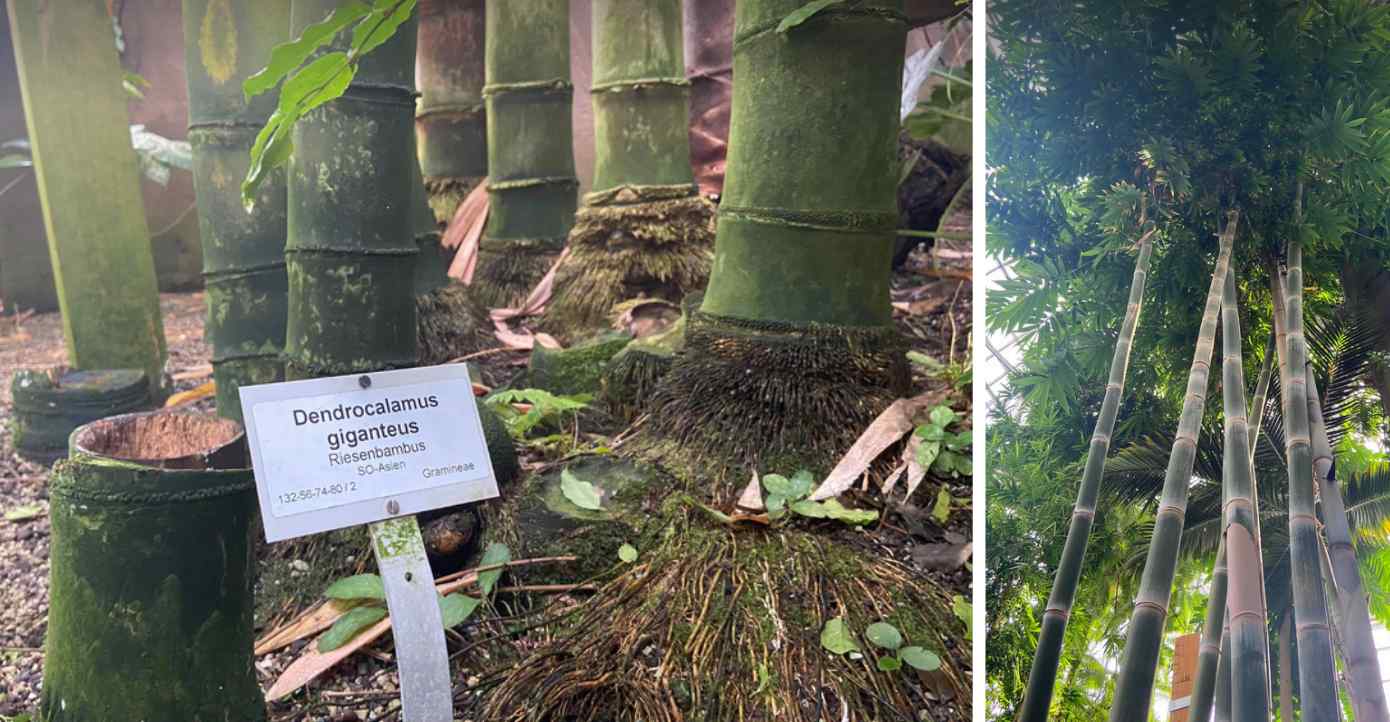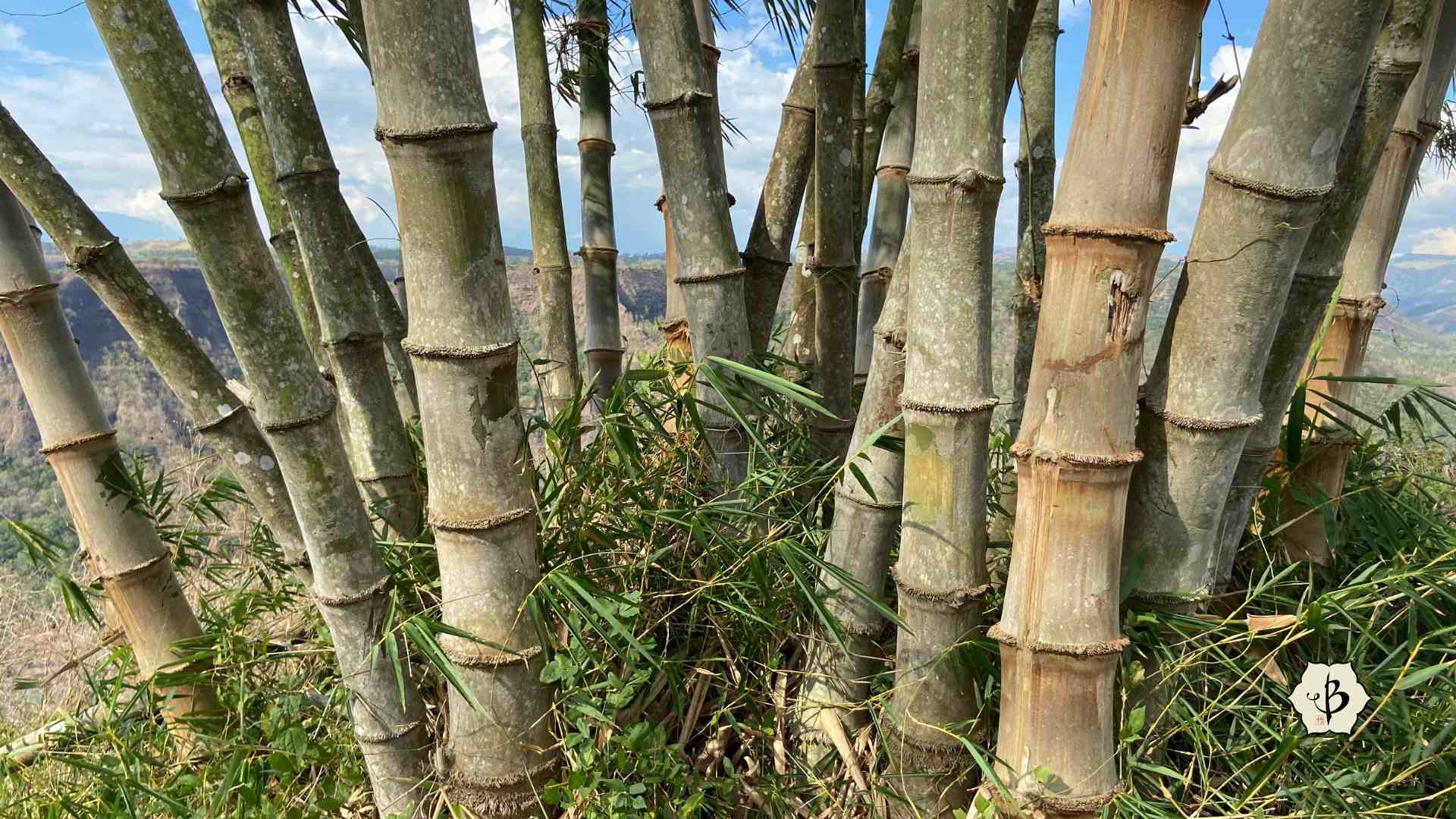People are fascinated and amazed by bamboo, as they should be. Although they technically belong to the grass family, many species of this vigorous perennial grow taller than trees. In the growing season, some bamboo can grow as much as a meter a day. And the lumber from this woody grass is stronger than maple and in some ways comparable to steel. We have so many superlatives to describe bamboo’s vitality and versatility. And many of us wonder, which species of bamboo is the biggest of all?
Authors and experts agree that Dendrocalamus sinicus is the largest species of bamboo on Earth. Also known as Giant Dragon Bamboo, D. sinicus can grow 150 feet tall, with culms more than 12 inches in diameter. Native to a narrow region in northern Laos, northern Thailand, and southwest China, this massive species only recently came to the attention of outsiders. Collectors and bamboo aficionados have since taken great interest, and now the seeds of Giant Dragon Bamboo are in high demand. It requires a tropical habitat to thrive.
This article — first published in June 2022 and most recently updated in November 2025 — is part of an ongoing series about different species and cultivars of bamboo. To learn more, check out some of these other detailed articles.
- BAMBOO SPECIES GUIDE
- A gallery of bamboo species
- Bambusa oldhamii: The most popular bamboo of all
- Black Bamboo: Phyllostachys nigra and others
- Blue Bamboo: Species that stand out
- Buddha’s Belly Bamboo
- Chimonobambusa quadrangularis: Square Bamboo
- Golden Bamboo: Phyllostachys aurea and others
- Semiarundinaria Fastuosa: Temple Bamboo
Characteristics of Dendrocalamus sinicus
We commonly describe bamboo with powerful, glowing language. It’s the world’s fastest-growing plant. It produces more oxygen than trees. It has millions of uses, it’s stronger than steel, and bamboo can save the earth.
Sometimes we exaggerate, but scientists agree that Dendrocalamus sinicus is the biggest bamboo ever. In southern China, researchers measured one specimen with a height of 46 meters (150 feet) and a diameter of 37 centimeters (14.5 inches) at the base. This is significantly larger than Phyllostachys edulis (Moso bamboo) or Dendrocalamus giganteus (Giant bamboo), which are both known to grow about 30 meters (100 feet) tall.

Like all members of the genus Dendrocalamus, D. sinicus is a tropical clumping bamboo. If you’re like me, you might want to plant one of these astonishing specimens on your property. You could definitely impress your neighbors. But it really prefers tropical rainforests. Unless you live in zone 10 or 11, or somewhere even warmer, like Key West, Hawaii, or the Caribbean, it might not work out so well. Giant Dragon Bamboo will not tolerate frost, and it needs relatively moist soil to thrive.
D. sinicus grows in a dense clump, and like everything else about the plant, the clumps are huge. A mature stand of this bamboo can be over 30 feet across, with as many as 100 individual culms.
Given its tremendous size, D. sinicus has enormous potential for construction uses and biomass production. Dense clumps and superior height mean that this species can produce a significantly higher yield than a variety like Moso, which is so widely used in China.
Distribution of Dendrocalamus sinicus
Giant Dragon Bamboo has a very narrow distribution, native to the Yunnan Province of southwest China, northern Thailand, and most of Laos. It is sometimes called Yunnan Bamboo. Westerners did not discover this species until the 1980s. But local inhabitants have been making use of this prized bamboo for centuries.
Since its discovery, bamboo growers around the world have begun taking a great interest in this exceptional variety. Many collectors just want D. sinicus for the bragging rights, so they can say: “My bamboo is bigger than your bamboo.” Others just want to gaze up and revel in the stunning majesty of one of nature’s most magnificent productions. (Full disclosure: I’ve placed Laos at the top of my bucket list for exactly that reason.)

In addition to the novelty and magnificence, the economic value of this bamboo is undeniable. Bamboo farmers throughout the tropics of Southeast Asia, Indonesia, Africa, and South America are all eager to add this species to their menageries. In the right conditions, it could easily surpass the productivity of every other bamboo variety.
Seeds of D. sinicus remain scarce, however. The plants flower sporadically, with an unpredictable cycle. And seed production is even less reliable, as male and female flowers tend to bloom at separate times. Occasionally, you’ll find bamboo seeds available online, but it’s a notoriously risky business. The species are frequently not what they claim. This could be an honest mistake, as the seeds are impossible to recognize, but it could also be an act of outright deceit.
Propagation by cuttings may turn out to be a more reliable method. But it will probably take years to achieve significant numbers and meet the demand of bamboo farmers and hobbyists around the world.
Other varieties of giant bamboo
It’s not uncommon to hear claims of the largest bamboo in various corners of the world. A number of communities in Indonesia, Southeast Asia, and South America would like these bragging rights. And there are a handful of bamboo species that go by the common epithet of Giant Bamboo. Here are some of them.

Dendrocalamus asper: Native to Southeast Asia and Indonesia, this is one of the most economically important bamboo species in the world. Their culms are known to grow about 100 feet tall and exceed 5 or 6 inches in diameter. The dense nature of their clumps makes this species a great choice for commercial farming. The fresh shoots are edible and the mature poles are excellent for building.
Dendrocalamus giganteus: A close relative to D. asper, this species is comparable in size, but more attractive as an ornamental because of its smooth, elegant culms. It looks great in a tropical garden setting. The clumps don’t grow as thick as Asper, however, so it’s not as widely cultivated by farmers. The Latin name literally means Giant Bamboo.
Dendrocalamus spp: Other varieties of Dendrocalamus, like D. stocksii and D. strictus are also enormous, but not quite a big and attractive as D. giganteus. They are certainly not as big as D. sinicus, but their solid or nearly sold culms make them very useful for building and for biomass.
Guadua angustifolia: The largest and most economically important bamboo species in South America, Guadua is often considered the strongest bamboo in the world. That’s what they will tell you in Colombia and Ecuador, at least. Like D. asper and D. giganteus, these culms can grow 100 feet tall and several inches in girth. The clumps or Guadua are more spread out, making them more difficult to farm and less desirable as ornamental specimen plants.

Further reading
If you’re fascinated by bamboo species of all sizes, and you enjoy perusing more in-depth articles on our website, take a look at some of these pages to learn more.
FEATURE IMAGE: Akash Thapaliya with a lone but mighty culm of Dendrocalamus sinicus in Nanning, China. Photo by Lihua Jiang, 2025.


























I bought a sinicus way back in 2018 and is supposedly taken grown from seeds of the bamboo. How long will it take to start growing bigger like in the pictures I see in the internet
Where are you growing it? If you’re in the US, don’t expect it to grow anywhere near the size it does in Laos. Unless you’re in Hawaii or Puerto Rico. Like most bamboo species, it probably takes 6-8 years to reach full maturity.
where can i find Dendrocalamus sinicus in Laos?
what are the ideal conditions to grow this bamboo?
I believe it grows in the north near the Chinese border. It thrives in a tropical jungle setting. I’m not sure if this species has been domesticated, but sometimes people buy seeds that are labelled “D. sinicus”.